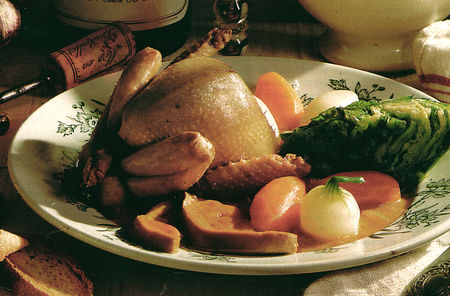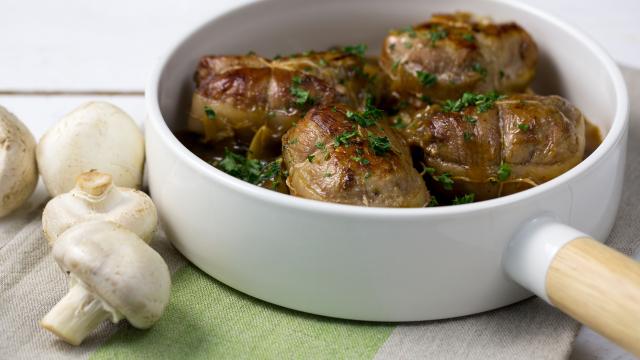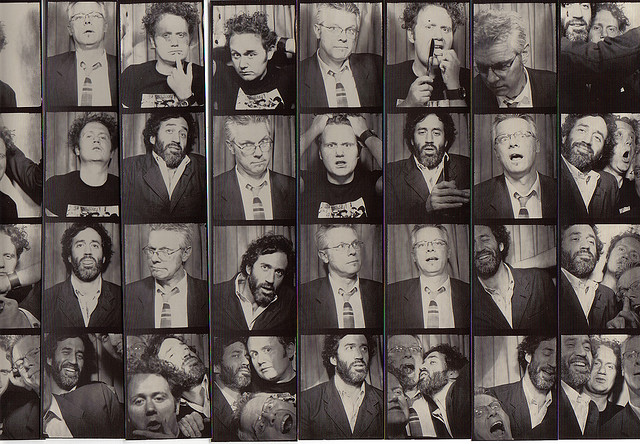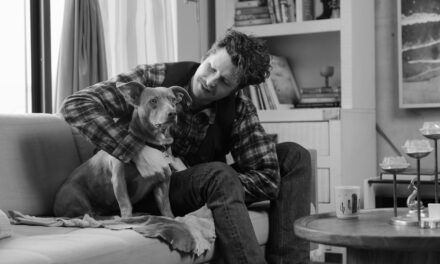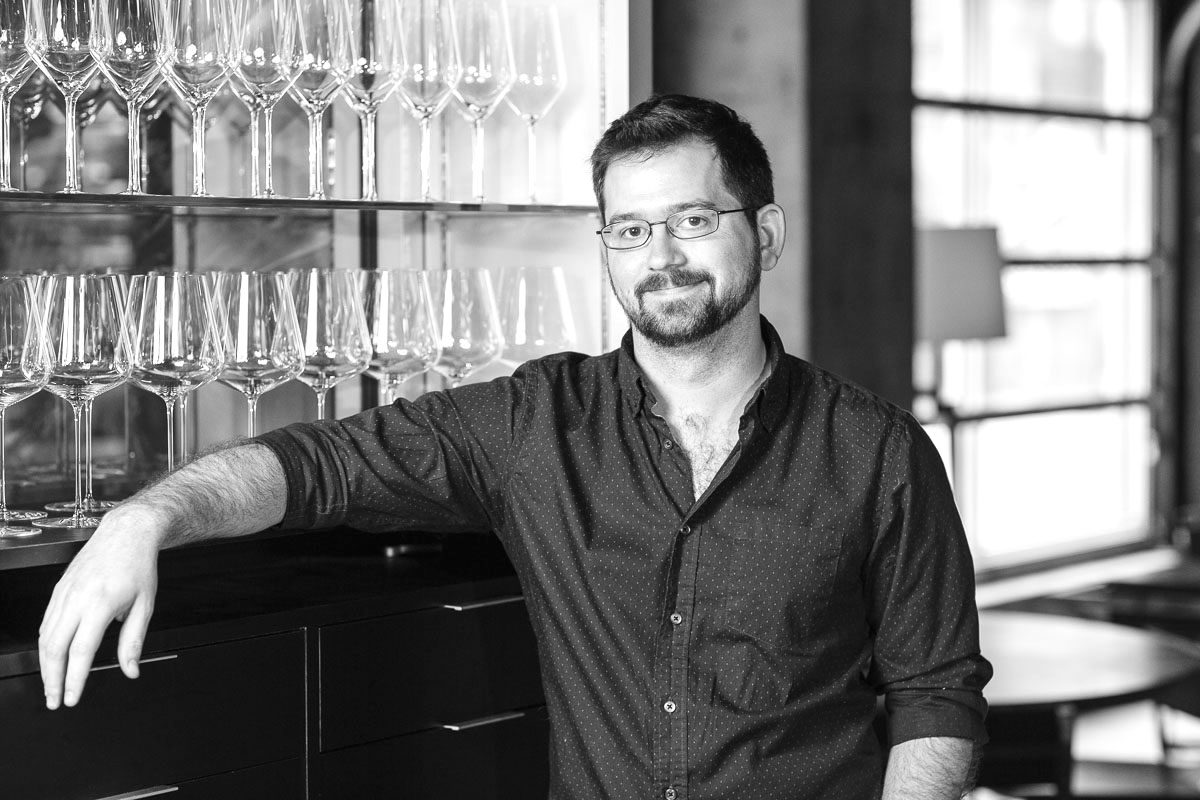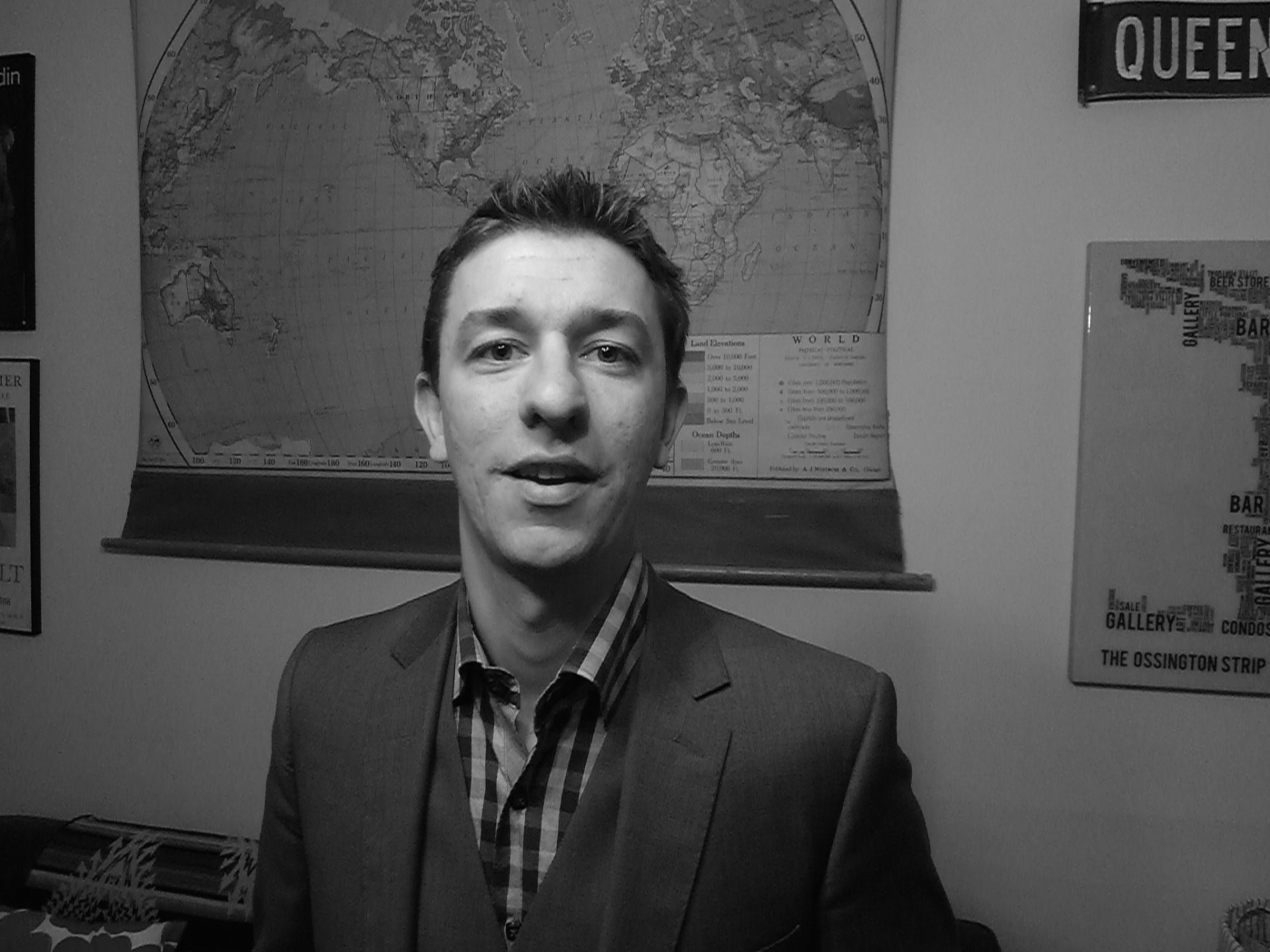In the third of an thirteenth (and wildly popular) series, we interview some of the most talented up-and-coming Sommeliers in Ontario. A few years back I was flicking through the pages of a locally published periodical and noticed that when it came to Sommeliers it was the same names that seemed to pop up over and over again. I was also becoming gradually cognisant of the fact that we more established wine folks were well and truly “losing our edge” to these young blood Sommeliers. Being well aware of the depth of new talent that was out there I finally decided to get together with a couple of fellow Toronto Sommelier “Old Guard” (Anton Potvin and Peter Boyd) to assemble a line of questioning that would give us an entertaining insight into the minds of these rising stars.
This month sees the turn of Mariko Tajiri, a young lady who knows a fair bit about not only wine, but also sake.
Good Food Revolution: So Mariko, what is it that you are doing these days?
Mariko Tajiri: I’m the National Brand Manager for That’s Life, a boutique sake and wine agency. Our portfolio is made up of pretty geeky stuff on both sides (sake & wine). I look after the marketing, sales and branding for the people we represent across Canada. This could mean in any given day being at the LCBO docks for a few hours, to giving seminars on sake and food pairings.
Also for the next two years, I am the VP of Knowledge and Education for the Sake Institute of Ontario. I get to be extra geeky in this role, organizing educational events and getting people interested in sake, which is pretty exciting!
GFR: And what kind of experience and training did you have before doing what you do today?
MT: A lot of drinking and hard work! I’ve been with the That’s Life for 9 years and I’ve done a lot of sake courses, seminars, visits to breweries and good ol’ reading. My formal training is a mix of WSET for wine, the Advanced Sake Professional certification through the Sake Education Council and the SSI (Sake Service Institute, based in Japan). I also became a WSET Level 3 Award in Sake Assessor and Instructor in January of this year.
I’ve also visited over 20 breweries in Japan and North America and give seminars throughout the year to service professionals and the public.
I was still in school when I started at That’s Life and did what a lot of undergraduate students to – took a nonsensical blend of Liberal Arts courses and changing my focus a million times. My undergraduate degree at SFU didn’t do much directly for my career but I’m guessing that’s what most people experience! The company took a leap of faith in me that since I was fluent in Japanese and I seemed pleasant enough, that I might do ok in a wine/sake sales role. They’ve been stuck with me since then.
GFR: How would the portfolio that you work with?… there’s a bit more than sake, right?
MT: I went from working at a Mission Hill winery store in BC selling a mix of coolers, ‘cellared in Canada‘’ and Mission Hill products to a portfolio that includes Marchesi di Gresy and Marcel Deiss. It was a 100% old world portfolio and grew to include other amazing producers like Stephane Tissot and Champagne Vilmart, Egly-Ouriet and Domaine Ramonet. Our wine portfolio here in Ontario is much smaller but recently we have started to work with top producers like Domaine Arlaud, Ramonet, Champagne Hubert Paulet and Eric Rodez.
The sake portfolio consists of 18 producers, who are of varying sizes but on the whole, boutique and family run. They are some of the top producers in Japan and the people who run them are pretty badass, going against hundreds of years of tradition! We have a few prima donnas, with serious rock star egos but for the most part, for good reason. They make sakes that are nothing like what my grandfather drank.
GFR: If you were to compare sake to wine, how would you explain that? Both the differences and similarities?
MT: Sake used to be all about consistency and subtlety. Whatever the conditions were that year, a brewer had to make the sake taste the same, year after year. Traditionally, Japanese food is subtle – there’s very little spice, heat and it’s very elegant. But Japanese food hasn’t stayed the same, just like how other global cuisines have evolved as well. Since the country has been opened up to outside cultures, there’s a huge amount of cultural borrowing. Tonkatsu, ramen, curry, tempura…these aren’t dishes native to Japan. And more recently, Japanese chefs have really embraced modern French, Italian, Chinese, Spanish…Japan is a culinary powerhouse in a very quiet, “Japanese” way and it’s based on learning from other cultures, borrowing and making it their own. So it’s no surprise that modern brewers have started learning from the wine producers that they look up to. A group of my brewers travel to Burgundy and Champagne every year to get ideas and insight into what top Chassagne Montrachet producers like Ramonet are doing (or have been doing) or why Olivier Paulet at Hubert Paulet wants Pinot Meunier that his region is known for to be expressed on its own.
And when these wine producers taste sake from people who have been experimenting and elevating sake have made, they’re amazed. These sakes are nothing like what they thought or have tasted before. They have acidity, brightness, depth and complexity that have all been heightened by brewers going against tradition. Techniques like pasteurizing in bottle and aging at super low temperatures to using natural yeasts and old-school brewing methods, which use ambient lactic bacteria have all been coming back after decades of boring sake. Boring sake wasn’t necessarily bad, just not as exciting as what we’re seeing now!
A lot of these thoughts have come from the wine world, as sake makers have had tasted and traveled more, and talked to more individuals doing exciting things around the world. Brewers understand that sake making is special and that it’s something that deserves so much respect but at the same time, knowing what the rest of the beverage world is doing is important in making sure sake has a place at the global scale.
All of this comes down to the fact that a great wine and a great sake share so much. For me, a great wine and a great sake feel similar. They’re real and honest. They’re balanced and have a sense of place and time. I think it’s no coincidence that the top wine producers in places like Burgundy and sake brewers in Japan are younger. They have a different approach than their parents or grandparents had. They are more about expressing the fruit or the vintage, themselves. And in Japan, a country where self-expression is not seen as a positive thing, this is big news!
GFR: And how do you find Toronto as a sake city, compared to your previous experience of Vancouver?
MT: In Vancouver, Asian culture is more embedded into everyday life and it’s part of the culture of the city – restaurants and chefs embrace Asian favours and ingredients and techniques into their cooking. French restaurants use Japanese ingredients in their cooking like – dashi, yuzu, and uni – so naturally, sake has a place on beverage list.
I feel like Toronto’s restaurants tend to be more compartmentalized and more set into their respective cultures. But people in Toronto embrace trends and are open to new things more open heartedly. Young people are interested in other cultures, to new and exciting things and sake happens to be one of them. This makes it so much easier to convince people to have sake. People in Vancouver – in particular Asians – have more preconceived notions of how sake is drunk whereas people in Toronto are more open to experimenting.
GFR: How many sake producers are there, in Japan and elsewhere, and how do you select who to work with?
MT: There are approximately 1200 breweries left in existence in Japan today. And our selection of sake producers comes from being able to establish a personal connection – we work with producers that we enjoy drinking. It’s a pretty simple process!
GFR: Now, how do I word this? Is there such a thing as a “Natural sake” scene in the same manner as there is with wine?
MT: There are similar philosophies and thoughts and a lot of sake producers get this from winemaking. Natural sake producers believe in low intervention sake making. Major tenants that they believe in include: not using charcoal filters, pasteurizing only once, and not adding water as they believe this dilutes the sake. These are usually younger producers who are embracing new ways to do things. As you can imagine, there are a lot of traditionalists who scoff at these aromatic, higher in acidity, expressional sakes.
There are also traditionally natural sakes that use Yamahai or Kimoto methods. These are old school ways of brewing (pre 1936) that use lactic bacteria instead of adding lactic acid. The lactic bacteria naturally create lactic acid over time, making a sterile environment for the yeast to thrive in. They take a lot more time and skill to make properly but have much more complexity than Sokujo (fast fermentation) sakes, which is what makes up more than 95% of the sake world.
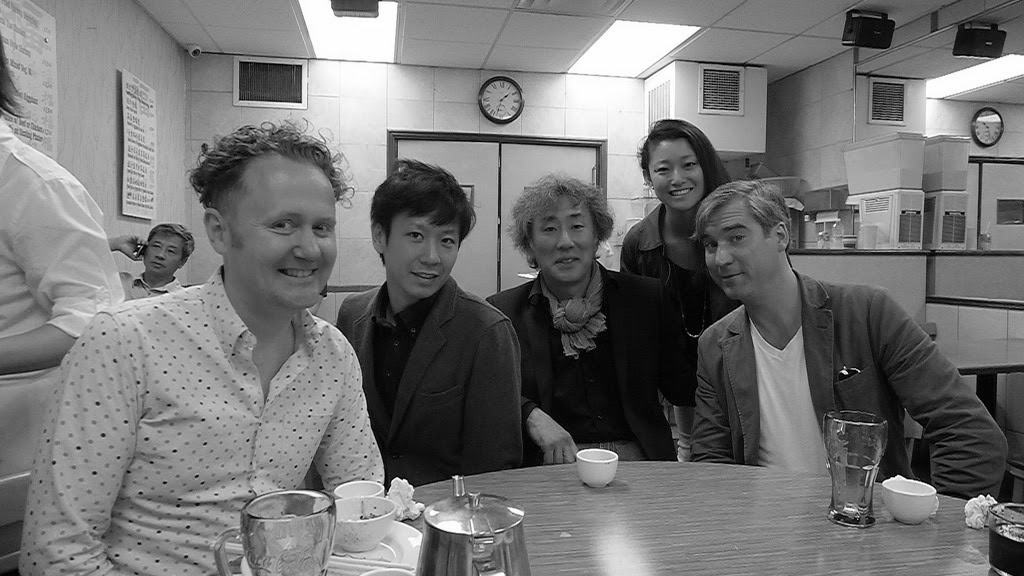
Sake Sommelier Mariko Tajiri entertaining GFR and Kuheji Kuno, the 15th generation owner of Banjo Jozo Sake Brewery.
GFR: Where have you found people most open to trying sake?
MT: Torontonians are open to trying sake. This city is open to trying new things and having new experiences and sommeliers are amazing to talk to as well. They are so keen, excited and thirsty to learn. They are so fun to talk to and pour sake for. People who are interested in any beverage, whether that be beer, spirits, mead, wine, are usually excited to learn about sake.
GFR: Who are your biggest customers?
MT: My core customers are definitely Japanese. Miku, Ki, Imanishi and Kasa Moto have amazing sake programs. Izakayas in the city, like Zakkushi, Guu and Kingyo are great partners as well. I get especially excited when places like George Restaurant and Midfield list sakes on their wine lists. The Black Hoof was really early in having sake as a regular thing. These are the challenges that keep me going after almost a decade of doing this!
GFR: How do you feel about Canadian sake? Any current favourites?
MT: Canadian sake has put sake on the map for locals. It is completely different from sake made in Japan much like wine made in new wine regions. The biggest difference is in the flavor profile – the intensity of aromas and taste are bigger and more North American. These producers also allow us to have access to nama sake – completely unpasteurized sake, on a regular basis. Nama sakes are typically only available at breweries in Japan or when you’re in Japan, because they don’t travel easily.
In Canada there are currently 3 sake producers – 2 in BC and 1 in Toronto. Artisan sake on Granville island – Masa has been making sake in Canada the longest. He’s doing fun things like making sparkling sake and growing his own rice. YK3 in Richmond, the brewer is the only one in Canada to be certified by the Brewer’s Association in Japan. He makes his own koji. Izumi, here in Toronto, just brought in Yamada Nishiki rice from Arkansas – Yamanda Nishiki rice is considered “the king of sake rice” and accessing this rice is a game changer for the Canadian sake industry. Izumi’s sake keg program allows restaurants in Toronto to serve sake in a way that’s never been done before.
GFR: Now, you are also involved in the organisation of Kampai ; would you please tell us about that?
MT: The Sake Institute of Ontario is a group of 13 sake importers and producers who are working together to bring sake into the mainstream. Kampai is the annual event that takes place at the end of June and this year we completed our 5th year in the distillery district. This year we had over 700 attendees, 50 producers, and over 150 sakes, added new vendors. We were completely sold out. We added master seminars – with yourself Jamie to add more advance topics like aging sake and regionality.
GFR: Now you have decided to make a few changes to the format this year, haven’t you?
MT: We’re in the process of reimagining what the event might look like next year given the overwhelming success this past year. There’s always more that we want to do!
GFR: How aware of sake were you whilst growing up? Were you around sake from an early age?
MT: My grandfather always had a big 1.8L bottle of sake and shochu in the corner of the kitchen. It was often at family functions and dinner table but I didn’t recognize the significance and the beauty of it until I started working for this company. It was only when I started going to Japan to visit breweries that I started to truly appreciate the cultural significance and the obsession these producers have to their craft.
GFR: And what about wine?
MT: Wine was something that my parents made in shitty u-brew places. Interestingly enough, I had more connection to wine because as a kid growing up in BC, we would go visit the Ogopogo and visit wineries where I would be upset I didn’t get to taste anything.
GFR: Can you remember your first taste of sake?
MT: Probably my mom’s cooking sake in the kitchen. She would always go out of her way to buy sake that was made in Japan but available in the BCLDB. Sake is a major ingredient in Japanese cuisine so I think I always knew sort of how it tasted.
GFR: And of wine?
MT: My parents home made wine so that was my first taste of it. It tasted pretty bad.
GFR: When do you feel children should be introduced to the wonderful world of sake… or wine?
MT: Both sake and wine are such natural food products that children should be allowed to at least taste it. Amazake is a sweet sake with low or very little alcohol and is very much a part of celebrations in Japan, even for children. Similar to drinking in Europe, drinking in Japan is not that taboo so children should be introduced to sake whenever the parents feel like it’s ok.
GFR: When did you first decide that you would like a career in sake/wine?… and was it with a view to being a Sommelier yourself?
MT: I went from working in retail at a Mission Hill retail store to working at That’s Life simply because someone knew of the company and recommended the job to me. It was very happenstance but I’m still there close to 10 years later. I always loved watching the food network and reading food magazines but I never thought that I would be working in this capacity. My career counselor didn’t tell me about jobs in alcohol when I was in high school!
GFR: So who or what gave you your first insight into the world of sake/wine?
MT: My first manager at That’s Life was pretty influential and made the bridge for me between sake and wine. She was a veteran in the industry and had been working in wine and sake for a long time. She isn’t Japanese and made me realize that sake doesn’t have to be only in Japanese/Asian contexts.
Ernest has also been very influential; our portfolio of wine and sake is one for wine/sake nerds – like a ‘fantasy hockey team’ for wine. It’s very different from other sake portfolios, which have a tendency to fetishize Japanese culture. I get the history and beauty of the culture but it’s not what drives me. I don’t like using geisha, kimono, samurai, etc., imagery in our marketing, unless there is a very real reason for doing so. You also won’t catch me wearing a kimono to events! One, because I don’t know how to put it on properly so it isn’t uncomfortable (it’s a real art) and two, because as a Japanese female, I don’t want that association. I believe in letting the sakes speak for themselves, as very relevant and significant players in the global beverage world. Quality speaks for itself.
GFR: The Sommelier world is notoriously full of pretentious arseholes, and after seeing that film Somm I worry about the emergence of a new Bro culture… I’d love to hear your thoughts?
MT: The somm world has always been dominated by men – there’s naturally a competitive culture that’s both ‘bro-ish’ and can get douchey. The sake world is a new group of people and there’s more women in it than the traditional wine world has. It’s refreshing, especially since the Japanese sake world is mostly male. But I also feel like in the international sake world, there’s some people who know very little who think they know a lot. It’s uncharted territory and there are only a few people that can call you out on it.
GFR: Which sake regions have you had the opportunity to visit?
MT: I have gone to over 20 breweries all over Japan. Interestingly, I haven’t been to any in Hokkaido, which is where I’m from. It’s probably because they don’t have a lot of breweries or many notable producers. But some of the best rice comes from there now so I’m keen to visit soon.
Some of my favourite visits include Akita, which is on most sake nerds list of destinations and Kanazawa (Ishikawa prefecture), where the sake style is savoury and quiet, and the food culture is amazing.
GFR: Have you ever made your own sake?
MT: Yes and it didn’t end well. A microbiologist in Vancouver, who also happens to love sake, does these classes where you make sake from a kit that he’s put together. It’s like a u-brew beer kit. While I was making the batch, my boyfriend at the time decided to “help” by warming up the starter mash with a portable heater. He had experience making wine and thought it would help in our very cold apartment. It got way too hot and the yeast died.
GFR: Have you ever worked in a restaurant as a Sommelier?
MT: I have hosted dinners and events but never on the floor as a Sommelier. I do a lot of seminars and training for staff, which has made me realize how difficult of a job it is!
GFR: What have been your career highs and lows?
MT: Career highs – It’s been so rewarding being able to develop personal friendships with great people in the industry such as brewers, other importers and service professionals. Being able to go to Japan this year to be certified by WSET as a sake educator was pretty amazing as well. The government of Japan sponsored the trip and one of the days was spent in Hiroshima, at the National Research Institute of Brewing. There are teams of PhDs researching things like how certain esters create aromatics to sake faults and why some smell like caramel corn. It was fascinating.
For career lows, I struggled when I first moved to Toronto. I was entering a market where I knew less of the people and restaurants in the industry. For a while, I felt like I was completely lost and starting out fresh. It was lonely and difficult but I’m glad I did it.
GFR: Who is, in your mind, a real role model for Sommeliers?
MT: I don’t know about a role model. I think it depends on what you want. There are the rock stars of the Sommelier world but I think the best ones are the ones that listen to the customer, challenge you but are not snobby. They know a lot and can lead you to something new or different.
GFR: Do you ever have nightmares about working with sake? I have nightmares about wines… regularly… and it usually involves being unable to find bottles in a cellar… and the clock is ticking away… in fact I had one last night!!! And I haven’t been in the role for over six years!!!
MT: My nightmares around sake usually involve around the LCBO and BCLDB. The various liquor monopolies that control our country.
GFR: What’s your idea of a perfect weekend off?
MT: A mix of cooking, eating and/or drinking good wine with good people. Vancouver is hilly so I was always lazy about biking but Toronto is so bike-able! Biking around, going to Farmer’s Markets is good fun. You get to see what’s in season, get new ideas and eat some good food.
GFR: Where are your favourite places to dine and drink.. perhaps tell us a hidden treasure of our city?
MT: Having worked for Ernest for so many years and having lots of Chinese friends, I have a soft spot for Chinese food. There’s a place on Dundas in Chinatown that serves a huge range of dumplings that doesn’t look great but have amazing house made food.
They don’t have corkage (bring Riesling!) and you just need to put your wine in the fridge next to the soy milk. Don’t even bother asking for wine glasses.
GFR: Do you cook yourself? What’s your favourite dish to cook these days?
MT: I do, mostly simple things. I have an obsession with hard boiled eggs. They’re perfect for breakfast and snacks. I also cook Japanese dishes when I feel homesick. My mom is a pretty good cook so I try to recreate some of the things she makes.
GFR: And have you had any cooking disasters recently?
MT: I’m not a patient person. Things happen that I’d rather not talk about.
GFR: Do you feel that there is a good sake community in Toronto?
MT: Kampai Toronto with more than 700 attendees this year was a great reminder that sake has a place in people’s lives. The LCBO is realizing that this is a category that can be successful. The East Asia Specialty Store in Markham has a huge selection of East Asian products, including sakes you can’t get anywhere else.
GFR: Do you hang about with other sake enthusiasts?
MT: Yes. I have great sake friends in Toronto that love sake for very honest reasons. We get together and have way too much sake and get very excited about aging temperatures.
GFR: How do you feel about Toronto as a wine and cocktail city? Where do you go if you need to get your wine or cocktail on?
MT: Toronto has a huge range of cool wine bars and cocktail destinations, to corporate lists that have very little soul. Archive, Midfield, the Hoof, I have a lot of respect for these guys doing very fun things and taking risks. They have wine on their lists that I think most people have never heard of. Nicholas Joly and Marcel Deiss by the glass always gets me excited! Jake Skakun is a friend from Vancouver and he’s always been doing interesting things wherever he goes. For cocktails, my friend Stu Sakai at the Rhum Bar has taught me so much (a properly made Daiquiri!) and as a fellow sake nerd, we have a lot of fun talking about sake yeast numbers.
GFR: Tell us a little about the use of sake in cocktails, and how that have been embraced by mixologists?
MT: Sake cocktails are contentious. To be fair, I’ve had a few examples that were done well. But for the most part, they don’t taste anything like sake. I stay away from anything with blue curacao, lychee syrup or named after geisha, ninja or Hello Kitty.
GFR: What would you be doing if you were not doing what you are doing today?
MT: Probably something in coffee. I worked for Starbucks before I got into wine and sake and back then, the baristas did a lot of coffee tastings and pairings with food (really!). That’s where I got introduced to thinking about things like flavours and food pairings. I know it doesn’t give me much coffee street cred when I say I worked for Starbucks but that’s where it all started for me…My favourite roaster in the city, Propeller Coffee, has such elegant, beautiful coffees and Geoff Polci, one of the owners, has taught me a lot about coffee regionality, terroir and what different processes do to the final cup.
GFR: What are your thoughts on music in restaurants?
MT: A good friend in the restaurant world once told me that there are a very few elements a restaurant can control and one of them is music. There’s appropriate music for every restaurant. Unfortunately, I think it often gets in the way of the dining experience.
GFR: Do you have a favourite sake related scene in a film/movie or show?
MT: In Iron Man, Tony Stark orders a “hot sa-kee” on his private plane. I can’t decide if I’m happy sake got mentioned or cringe.
GFR: I know that you have non-industry friends… how do they feel about what you do for a living?
MT: They think I drink a lot. They’re kind of right.
GFR: What are your thoughts on blind tasting sake?
MT: When you blind taste sake, I think you can tell stylistic things – whether it’s junmai or non-junmai, Ginjo or non-Ginjo. How long it’s been aged, the condition it’s in. The thing about sake is that there are producers in many regions doing non-traditional things that it’s very difficult to know where it’s from but you can make a good guess. It’s important to keep your palate sharp even as an agent and it’s always good to know what’s out there.
I also teach sake for WSET and it’s a pretty big part of the curriculum. Students have to taste a range of styles and be able to assess quality and condition.
GFR: Are you a better blind taster with or without a bad hangover? I’m definitely the former…
MT: Without a bad hangover. Mind you, I think sake hangovers are better than others.
GFR: What’s your current favourite sake producer and why?
MT: Aramasa, in Akita prefecture, is a producer that’s shaking up the world of sake. The brewery is where yeast #6, the oldest yeast that’s still used to this day, was found and this brewery exclusively uses this yeast for all their tanks. Although they use natural yeast so who knows what else is in there! Their sakes are made in the ancient kimoto method and it produces so much acidity and complexity. It’s crazy labour intensive and risky (last year, our allocation for all of Canada was 5 cases because he had an accident with one of his batches!) but his version of kimoto is modern, layered and infinitely interesting.
Sato San, the president and brewer, studied English Literature at Tokyo University (the Harvard of Japan) and his explanations for why he does things a certain way can be super abstract and way too intellectual but you can’t deny that his sakes are out of this world.
GFR: In your mind, as an Sommelier, what is “hot” in the world of sake right now?
MT: Omachi rice is a rice variety that’s popular right now and so is using local, regional rice. Yamadanishiki is still considered the “king of sake rice” because it’s easy to polish and work with. It can make really pretty, elegant sakes. I’ve heard brewers call it the “teacher’s pet” of rice. Omachi rice on the other hand, isn’t easy to polish and the sake can be rustic. It’s one of the two oldest rice varieties around today. It’s a heritage rice and pure – it’s never been crossbred with any other rice varieties. The younger generation is using this less prestigious rice to make more flavourful, more pronounced sakes. The good ones have power and intensity that Yamadanishiki doesn’t offer.
There’s also a push for using local or regional rice. Brewers are talking to farmers, getting to know what grows in their own backyards. It’s easy to buy rice wherever you are in Japan but why not use what thrives in your area?
GFR: And what’s not so hot? What has fallen out of favour?
MT: I think there’s been a bit of a step back from the classic styles of sake that are clean and crisp. They don’t assert themselves as much as the newer styles. I love the interesting, personality driven sakes but I think there’s a place for all types. These classic sakes are like the Pilsners of the sake world. You can drink them all day long – session sakes!
GFR: When it comes to sake is there anything that you feel is overrated?
MT: I think with craft anything (craft beer, wine, spirits, sake, etc.) we have a tendency to overstate the importance of “character” at the cost of quality and balance. I’ve had sakes with weird, most likely unintentional stuff going on be explained as having style or personality. I think true craftsmanship is when the brewer can do what they intended to do, on a regular basis. It shouldn’t be fluke that the sake is bubbling!
GFR: What is your favourite sake pairing right now, something nice and seasonal?
MT: It’s too hot and humid for me right now for full plates of food! So something light, like seafood Carpaccio with olive oil and capers with the Tengumai Umajun. The sake is fresh, with notes of fresh zucchini but savoury enough with 12 months of aging that the salty capers and umami from the fish would really be heightened. It’s also at the LCBO right now…!
GFR: Okay… three sake pairings with me on the spot?… this time with… Classic French cuisine
What would you suggest to pair with them sake-wise… and why?
1: Paupiettes de Saumon au Beurre Blanc
AKA Stuffed Salmon Rolls with White Butter Sauce
MT: Kozaemon Junmai Daiginjo. The sake always reminds me of Northern Rhone whites, with it’s texture and aromatics. Beurre blanc with the rich, buttery texture of the sake would be nice and any seafood with sake is naturally easy to imagine.
- Pot au Feu de Pintade
AKA Braised Guinea Fowl with Baby Vegetables
MT: Yamagata Masamune 2014 Akaiwa Omachi. This guy makes 10 tanks of Junmai Ginjo and the best one becomes a vintage bottling. The “best one” isn’t the one that necessarily tastes the best at the time but has potential to age. It’s matured for a year before release so it’s calmed down just a touch but has the backbone that Omachi rice offers. The sake has a lot of power and presence so it’ll stand up to braised game meat.
- Escalopes de Veau Chasser
AKA Veal Escalopes In A Mushroom And Wine Sauce
MT: Kuro Obi Do Do Yamahai from Fukumitsuya. Yamahai sakes use ambient lactic bacteria and is much more
GFR: Do you often drink beers or spirits?
MT: I like beer a lot. I love things with a good dose of acidity so wheat beers are often my go-to. I was spoiled in Vancouver with tons of microbreweries and there seems to be a new one every time I go back. Toronto has some great beers that I’m starting to discover. For spirits, I like Scotch, Japanese whiskey, eau-de-vies…so I yes, I often drink spirits.
GFR: What is your least favourite part of your job as a Sommelier?
MT: The logistics of moving alcohol in this country is exhausting. There are so many rules and regulations, lab tests, labeling issues…it’s still baffling to me that you can’t ship between provinces.
GFR: What is your weapon of choice when it comes to a corkscrew?
MT: I usually have with me: a Coravin, corkscrew and Champagne stopper.
GFR: Due to us being around alcohol, many people in our industry often have quite the increased tolerance for wine/booze, or they develop issues. What is your limit and how do you keep yourself in check?
MT: I think I do have a high tolerance for alcohol. It helps when you have to taste 20 sakes at a brewery! But I enjoy drinking good, quality beverages and not to get drunk. I know that when I drink too much, I feel really shitty the next day and that usually keeps me in check.
GFR: Have you ever been “cut off”? If so, where and when was the most recent time? I don’t think that I’ve ever heard about you getting cut off?
MT: I haven’t been cut off yet by anyone at a restaurant or bar.
GFR: What are sake hangovers like and how do they differ from the ones I usually have?
MT: Sake hangovers are gentler but they creep up on you. Obviously, it depends on how much you drink but I feel like if you drink good sake, it’s not as bad.
GFR: Do you have a good hangover cure?
MT: I’ve tried prickly pear juice, fizzy tablets from Australia… I think at the end of the day, just a lot of liquids and sweating it out.
GFR: How many sakes do you taste in a week?
MT: Maybe 5 – 6 on average.
GFR: When tasting with producers or clients do you choose to spit or swallow? I read that it was actually viewed as being rude to spit sake. Is there any truth in this?
MT: Our sake producers know that in the wine world, it is normal to spit and better to do so. Historically, Japanese sake people talked about how the sake tastes after you swallowed. Maybe these people didn’t taste as much as tasting panels do now or they had a really high tolerance because I don’t think you can taste properly! When we go to our breweries, they usually have wine glasses and spittoons.
GFR: What’s your “house” sake at home?
MT: Whatever tail of a sample bottle I have.
GFR: Most remembered sake ever?
MT: My very first sake brewery visit in Japan was to Fukumitsuya in Kanazawa. I tasted their tank samples that had been freshly pressed. It was fresh, juicy and so alive. That’s the one I remember the most.
GFR: What is your perfect glass (or bottle) of sake at the end of a crazy day at work?
MT: Either something really bright and refreshing with acidity, or a quiet, more savoury sake.
GFR: And now the cheesy question Mariko… If you were a type of sake rice which would you be? and why?
MT: Omachi. It’s not a flashy rice and it doesn’t make delicate sakes. But it’s reliable and makes sake with character. I don’t like doing what everyone else is doing and I think the people who use Omachi feel a little bit like rebels!
GFR: Thank you for taking the time Mariko… and thanks for doing this.
Edinburgh-born/Toronto-based Sommelier, consultant, writer, judge, and educator Jamie Drummond is the Director of Programs/Editor of Good Food Revolution.
Peter Boyd has been a part of Toronto’s wine scene for over two decades. He has taught the Diploma level for the International Sommeliers Guild, and has been the sommelier at Scaramouche Restaurant since 1993. He also writes about wine, food and pop culture and raises show molerats for fun and profit. He’s also one of the most solid guys in the business.Trust this man. Seriously… he knows his shit and is slowly taking over this city. He just celebrated his 67th birthday!
A well-known and much respected figure on the Toronto food and wine scene for almost twenty years, Potvin has worked in many of the city’s very best establishments including Biffs, Canoe, and Eau. In 2004 Potvin opened his incarnation of the Niagara Street Café, a restaurant that has gone from strength to strength year after year, with universal critical acclaim. Anton spends much of his time traveling and tasting wine and has been ranked highly in consecutive years of the International Wine Challenge. Anton is now GM at DaiLo with Chef Nick Liu.






